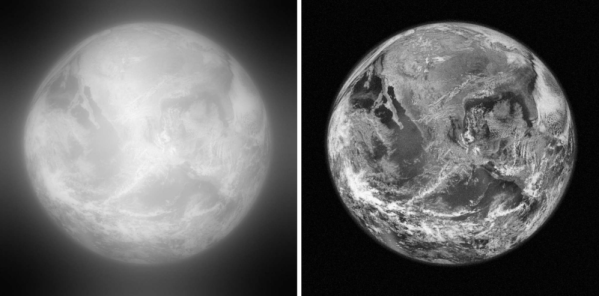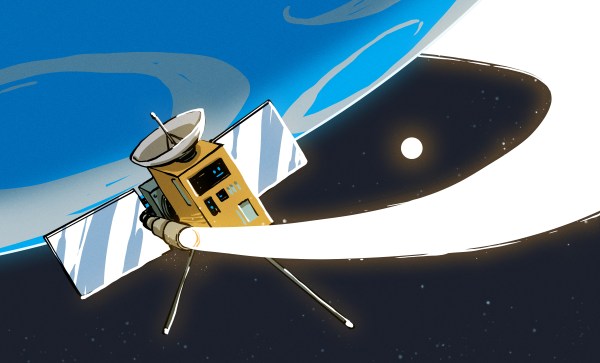Have you ever wished we could peek at all these exoplanets that have been recently discovered? We aren’t likely to visit anytime soon, but it would be possible to build a truly giant telescope that could take a look at something like that. At least according to [SciShow Space] in a recent video you can see below.
The idea put forth in a recent scientific paper is to deliberately create the conditions that naturally form gravitational lenses. If you recall, scientists have used these naturally-occurring lenses to image the oldest star ever observed. These natural super-telescopes have paid off many times, but you can’t pick what you want to look at. It is all a function of the distance to the star creating the lens and the direction a line between us points.
But what if you could create your own gravity lens? Granted, we probably aren’t going to do that in our garages. However, a recent paper talks about launching an optical detector that you could maneuver so that it was on a line that would pass through the object you want to see and our own sun. We clearly have the technology to do this. After all, we have several nice space telescopes, and several probes operating far away from the sun.
That is one of the biggest catches, though. This new telescope will need to be some 550 AU from the sun to get good results. For the record, the Earth is 1 AU (about 8 light minutes) out. Pluto — maybe not a planet anymore, but still a signpost on the way out of the solar system — is a scant 39 AU out. Voyager I, which has been racing away from the sun since 1977 is only about 156 AU out.
Because the craft would be so far out, it would be practically a one-shot mission. You also have to have something reliable enough to go the 17 years it would take with today’s technology to get in place. You also need a way to get the data back over that distance. All doable, but non-trivial.
The paper simulates what the Earth would look like using this technique from a nearby star. The images are shockingly good, especially after a bit of post-processing. Meanwhile, we may have to settle for more modest images. You might not see detail, but it is possible to find exoplanets with reasonably modest equipment.
Continue reading “Truly Giant Telescope Could Image Exoplanets”












